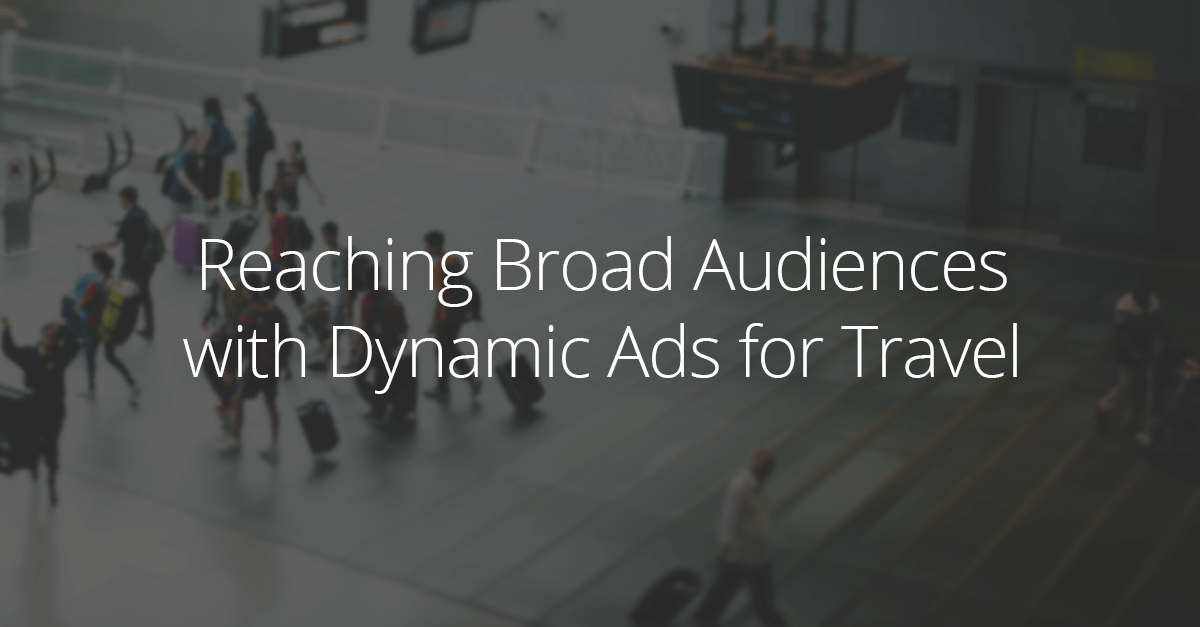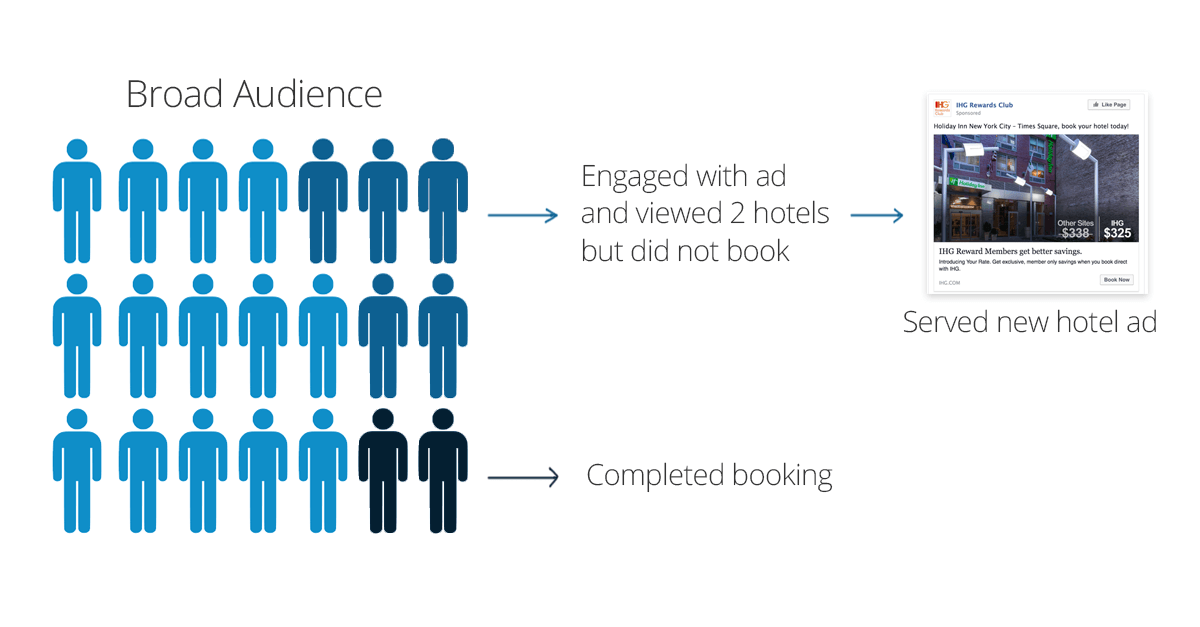Blog
Reaching Broad Audiences with Dynamic Ads for Travel
Published August 30, 2017 by Connor VanDaveer

Last week Facebook released broad audiences for Dynamic Ads to all advertisers globally on Facebook, Instagram and Audience Network. This is a huge move for Facebook toward a full-funnel approach that presents a major opportunity for travel advertisers to reach new customers with city-specific intent. We’re extremely excited to see this product rolled out for hotel advertisers on Dynamic Ads for Travel, as our clients have been involved in testing this feature since the pre-alpha stage through beta.
What are Broad Audiences & How Do They Work?
Broad audiences (also known as prospecting) is an audience targeting setting that allows advertisers to reach customers who are in-market for travel with a specific destination in mind but have not visited that advertiser’s site. For example, let’s say a business consultant, Doug, is searching for a hotel in Phoenix for an upcoming business trip. He searches across multiple websites and search engines to compare prices, reviews and amenities. His search activity and demographic information may make him an ideal candidate for receiving ads for a particular hotel in Phoenix, even if he didn’t visit the website for that specific hotel. Broad audiences allow Facebook advertisers to reach consumers with travel intent like Doug. To define how users are collected in broad audiences, Facebook states that it “combines what it knows about people’s browsing activity (on and off Facebook), their demographic characteristics, and products in retailers’ catalogs, to deliver ads with personalized product recommendations.” This new targeting specification provides extreme value for travel advertisers as it allows new customers to interact with the brand and drive them down the booking funnel.
For example, let’s say a business consultant, Doug, is searching for a hotel in Phoenix for an upcoming business trip. He searches across multiple websites and search engines to compare prices, reviews and amenities. His search activity and demographic information may make him an ideal candidate for receiving ads for a particular hotel in Phoenix, even if he didn’t visit the website for that specific hotel. Broad audiences allow Facebook advertisers to reach consumers with travel intent like Doug. To define how users are collected in broad audiences, Facebook states that it “combines what it knows about people’s browsing activity (on and off Facebook), their demographic characteristics, and products in retailers’ catalogs, to deliver ads with personalized product recommendations.” This new targeting specification provides extreme value for travel advertisers as it allows new customers to interact with the brand and drive them down the booking funnel. Tips for Broad Audiences
Creative
It’s best to test all forms of creative, as we’ve seen varying success by brand with destination, lifestyle, and property imagery. Additionally, utilizing static cards to display benefits or deals is a great way to add incentive for a user not familiar with your brand.Additional Targeting
Similar to other Facebook products, advertisers have the ability to target leisure or business travelers along with demographic parameters. Since users within broad audiences haven’t visited the advertiser’s site, tailoring creative to specific segments increases relevance, engagements, and downstream activity. Even though this setting is meant to focus on users who haven’t been to the advertiser’s site, we still recommend excluding site visitors as an extra precaution.Expected Performance for Broad Audiences
KPI’s
Prospecting has proven to drive incremental revenue and bookings, but KPI’s like ROAS or ROI may be lower than with DAT retargeting. It’s best to use these metrics in combination with reach and lift to DAT retargeting. We’re seeing lower CPM’s (cost per thousand impressions) for broad audiences relative to retargeting. Finally, as your testing different creatives, be sure to monitor CTR closely since it’s a great indicator of how potential new customers are connecting with your brand.Fuel Retargeting Audiences
One of the main values we’ve seen with broad audiences is the ability to increase retargeting audience size. When a user engages with a broad audience ads, they can be driven directly into the DAT funnel. If the user doesn’t book through the broad audience ad, they’ll be retargeted in the future with even more relevant content to complete their booking (as shown in the image below). It’s also worth mentioning that mobile booking volume has been notably increased as a result of broad audiences. We’ll continue to monitor our ongoing results with Dynamic Ads for Travel broad audiences, and we look forward to seeing this feature become available for other verticals within the travel industry. If you’d like to learn more about DAT or how to set up broad audiences, reach out to our social team at social@koddi.com.
We’ll continue to monitor our ongoing results with Dynamic Ads for Travel broad audiences, and we look forward to seeing this feature become available for other verticals within the travel industry. If you’d like to learn more about DAT or how to set up broad audiences, reach out to our social team at social@koddi.com. 
You may be interested in
GET IN TOUCH
Ready to get started?
Don’t let your brand get lost in the noise. Partner with Koddi to unlock the power of commerce media and transform the way you engage with your customers. Our team of experts is here to help you navigate complexities and develop a strategy that drives results — no matter what industry – in as little as 45 days.